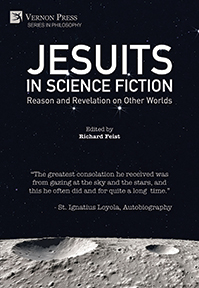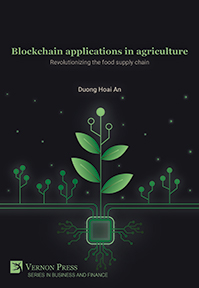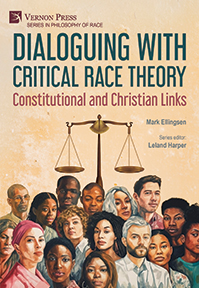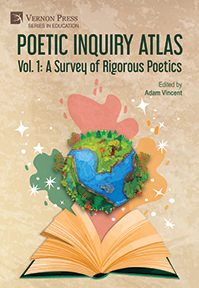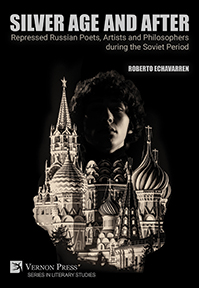Search
Browse
by Publication status
by Subject
Anthropology (26) Art (124) Business and Finance (26) Cognitive Science and Psychology (54) Communication and Journalism (45) Economics (62) Education (66) History (149) Human Geography (22) Interdisciplinary (42) Language and Linguistics (129) Law (16) Music Studies (18) Philosophy (157) Political Science and International Relations (103) Sociology (304) Statistics and Quantitative Methods (20)by Series
Series in Literary Studies (65) Series in Philosophy (59) Series in Education (51) Series in Sociology (42) Series in Politics (32) Series in World History (32) Bridging Languages and Scholarship (31) Series in Language and Linguistics (25) Cognitive Science and Psychology (20) Series in American History (20) Series in Philosophy of Religion (20) Series in Art (19) Critical Perspectives on Social Science (16) Series in Cinema and Culture (16) Curating and Interpreting Culture (15) Series in Critical Media Studies (14) Series on the History of Art (14) Series in Anthropology (13) Series in Business and Finance (13) Economics (13) Series in Music (12) Series in Communication (9) Series in Performing Arts (9) Philosophy of Personalism (8) Series in Law (8) Series in Economic Methodology (7) Series on Climate Change and Society (7) Women's Studies (7) Classics in Economics (6) Series in Economic Development (6) Philosophy of Forgiveness (5) Series in Built Environment (5) Series in Economic History (5) Series in Philosophy of Science (4) Series in Social Equality and Justice (4) Series on the History of Science (4) Serie En Estudios Literarios (3) Serie en Sociología (3) Series in Contemporary History (3) Series in Creative Writing Studies (3) Series in Design (3) The Interdisciplinary Built Environment (3) Serie en Comunicación y Medios (2) Serie en Historia (2) Series in Heritage Studies (2) Series in Innovation Studies (2) Series in Philosophy of Race (2) Serie en Ciencias Políticas (1) Serie en Entorno Construido (1) Serie en Estudios Culturales (1) Serie en Filosofía (1) Serie en Filosofía de la Ciencia (1) Serie en Música (1) Series in Classical Studies (1) Series in Economics of Technological Change (1) Series in Urban Studies (1)by Language
English Spanishby Author
Browsing with filters
Jesuits in Science Fiction: Reason and Revelation on Other Worlds
Edited by
Richard Feist, University of King’s College
Availability: Forthcoming
$111 £88 €103
From their founding in 1540 to this day, Jesuits have been controversial. Their centuries of missionary work have taken them to all corners of the world. They have been accused of killing Kings and Presidents and contributing to colonization and destruction of cultures—even participating in enslavement. But the Jesuits have also been seen as bringers of light and education. With their ferocity of purpose and intellectual rigor, the Jesuits’ impact on world history cannot be ignored. No surprise then, that Jesuits appear in literature, especially that literature of ideas, exploration, and social commentary, otherwise known as science fiction. This unique collection of essays explores how the Jesuit has long been part of science fiction’s history and how Jesuit ideas and characters are featured in some of science fiction’s greatest works. In this collection, we see Jesuits continue their missionary spirit as they take leave of the earth, moving their missionary labors literally towards the heavens. Reason and revelation are now indeed on other worlds. In this collection, we have explorations of philosophy, science, theology, and culture, all done in typical Jesuit fashion, always in various and foreign contexts. This collection is akin to others in its linking of religion and science fiction, but it is unique in its concentration on the Jesuits and science fiction. This collection will be of interest to scholars working and researching in the field of science fiction studies and would be suitable for courses on science fiction. But it will also be of interest and accessible to those of us who simply love science fiction for its power to explore other worlds and, in this case, to take some of the deepest human reflections, namely those on God, morals and culture, lift them up, and see what forms they may take on other worlds.
Blockchain applications in agriculture: Revolutionizing the food supply chain
Duong Hoai An, Thai Nguyen University of Agriculture and Forestry, Vietnam
Availability: In stock
424pp. ¦ $84 £67 €78
'Blockchain applications in agriculture: Revolutionizing the food supply chain' is your definitive guide to the transformative impact of blockchain technology on agriculture and the modern food supply chain. In this comprehensive volume, we begin with “Introduction to blockchain technology,” laying the groundwork for readers of all backgrounds. From there, we delve into the intricate relationship between blockchain and the agriculture industry in “Overview of the agriculture industry”. The heart of the book explores practical applications in agriculture and the supply chain, including “Blockchain-based supply chain management,” “Farming and crop management,” “Livestock management and animal welfare,” and “Food safety and quality assurance.” We also explore how blockchain revolutionizes “Agricultural finance and insurance” and fosters “Sustainable agriculture and supply chain sustainability”. Drawing on “Case studies and real-world examples,” you’ll see blockchain in action, offering invaluable insights for farmers, supply chain professionals, academics, and policymakers. Our forward-looking chapter, “Future Trends and Challenges of Blockchain,” anticipates the evolving landscape of this groundbreaking technology. This book stands out for its depth, practicality, and relevance. It is equally suitable for reference, as a methodological guide, for classroom adoption, or as essential reading for researchers and practitioners in the fields of agriculture, technology, supply chain management, and policy. Whether you’re seeking to optimize farming practices, enhance supply chain transparency, or understand the regulatory implications, 'Blockchain applications in agriculture' equips you with the knowledge and inspiration needed to navigate the future of food production and distribution. Join the agricultural revolution today.
Dialoguing with Critical Race Theory: Constitutional and Christian Links
Mark Ellingsen, Interdenominational Theological Center
Availability: In stock
112pp. ¦ $54 £43 €50
Critical Race Theory (CRT) is certainly a hot topic. No longer just the legal theory it was originally designed to be, it has become an icon for determining which side you are on concerning racism. Most of the loudest voices, especially in the debate about CRT in our schools, seem not to have actually studied the theory. This is a book to get you into the heart of CRT’s actual analysis and prescriptions. It’s a book to get Americans to stop all the shouting and really find out what CRT teaches. It might also contribute to getting more civility into our public discourse. Ellingsen demonstrates how in fact what Critical Race Theory teaches is in line with our Constitutional system’s realism about political solutions, suspicions of our selfishness, and the majority’s tendency to run roughshod over minorities. He also demonstrates that these commitments are consistent with Christianity’s understanding of original sin and the quest for social justice. Consequently, if critics do not want CRT taught in our schools or to be part of our public discourse, we had better stop teaching the Constitution and Christian values in our schools, to rule these commitments as out of order in our search for common values! Get ready for a stimulating, controversial, well-documented read.
Poetic Inquiry Atlas Vol. 1: A Survey of Rigorous Poetics
Edited by
Adam Vincent, Capilano University; The University of British Columbia, Canada
Availability: In stock
324pp. ¦ $108 £86 €101
This edited volume illustrates various definitions and uses of poetry in research and scholarship, both across disciplines and across the world. The collection offers a worldview of the capacity of poetic inquiry to enhance research and scholarship by showcasing rigorous poetics (which [re]present epistemology and aesthetics as synergistic) in action. Each chapter is intended to highlight diverse perspectives and uses of poetic inquiry, thereby highlighting commonalities and differences in praxis, that include: - Critical discussion around poetry and its uses in each poet-scholar’s diverse practices (e.g., research, writing, personal development, healthcare, mental health, ecology and/or scholarship). - An example of poetry that showcases their approach(es) in action. - Insights into the crafting of their poetry (i.e., what choices were made? why were specific choices made?) - An exploration of how their poetic work links to the vast rhizomatic array of poetic inquiry. This volume is well-suited for new scholars, looking for ways to integrate poetry into their praxis, and experienced scholars who wish to further their understanding of the capaciousness of poetic inquiry as a valuable method, methodology, tool and/or approach. It also holds insights for those interested in the power of poetry as it relates to mental health, health care, ecology, teaching, qualitative research and identity work.
Silver Age and After: Repressed Russian Poets, Artists and Philosophers during the Soviet Period
July 2024 / ISBN: 978-1-64889-020-8Availability: In stock
270pp. ¦ $79 £63 €74
The details of the Jewish Holocaust have become part of our history through the testimony of those who survived the death camps. The details of Lenin’s and Stalin’s reign of terror are far less known because they took place behind a wall of secrecy, and because survivors have been loath to speak about them for fear of retribution. This is an encompassing volume presenting an intense display, as complete as can be, of poets, artists, musicians, and philosophers and intellectual actors implicated in different aspects of Russian life roughly through the period 1900-1960. They were people who had lived under the Soviet regime in times of peace and in times of war, from the Red Terror through the Great Terror. One must bear in mind the political and economic conditions in which those lives developed: the one-party rule placed above both the government and the citizens, the abashment of the division of powers, the suppression of private property and private economic initiative, the political police, and the GULAG. I deal with the poets in several chapters, then theater directors, then composers, then philosophers (these both in the introduction and in the play at the end of the book). Besides the Prologue and Introduction, the reader will find an Index of historical names, plus an extensive Bibliography. The work can be used for reference, for classroom adoption, for researchers/practitioners of Russian Literature, Political Studies, Slavic Studies, and Russian History.

